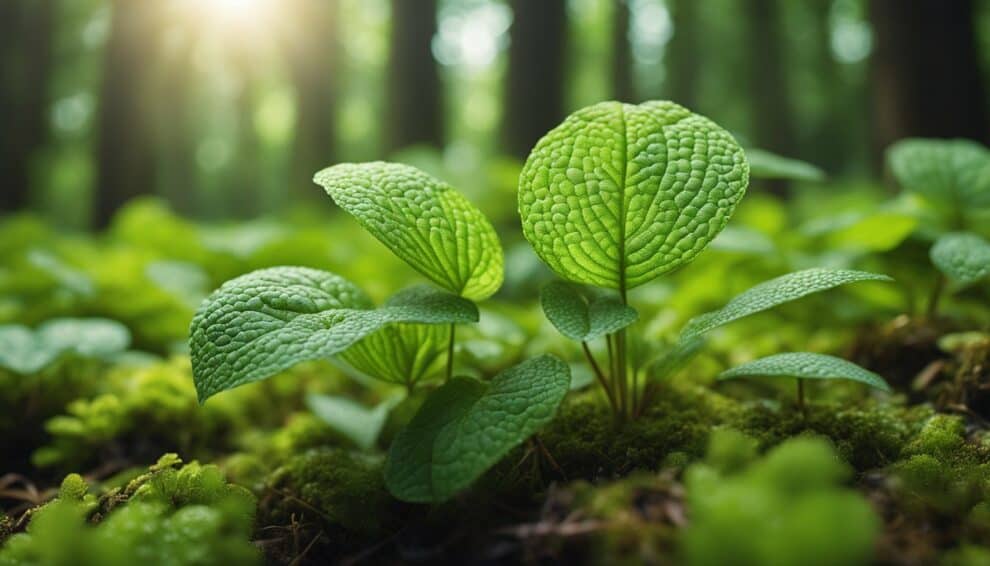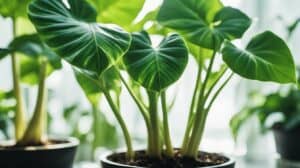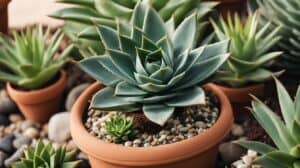Veined Beauties: Nerve Plant (Fittonia albivenis) Propagation Simplified

The nerve plant, also known as Fittonia Albivenis, is a popular houseplant due to its unique veined leaves that come in a variety of colors. This plant is native to the tropical rainforests of South America and is relatively easy to care for, making it a great choice for beginner gardeners. In addition to its aesthetic appeal, the nerve plant is also known for its air-purifying qualities, making it a great addition to any indoor space.
One of the most appealing aspects of the nerve plant is its ability to propagate easily. Propagation is the process of creating new plants from existing ones, and the nerve plant is particularly well-suited for this. With just a few simple steps, gardeners can easily propagate their nerve plants and create new beautiful plants to add to their collection. In this article, we will explore the different methods of nerve plant propagation and provide tips on how to care for your new plants.
Understanding Nerve Plant Propagation
Propagation Basics
Nerve Plant (Fittonia albivenis) propagation is a simple process that involves taking stem cuttings from a healthy plant and rooting them in water or soil. The best time to propagate nerve plants is during the spring or summer months when the plant is actively growing.
To propagate a nerve plant, start by selecting a healthy plant with strong stems and leaves. Using a sharp, clean pair of scissors or pruning shears, cut a stem from the plant that is approximately 3-4 inches long. It is important to make sure that the stem has at least two leaves attached, as this will help the plant to produce new roots.
Next, remove the lower leaves from the stem, leaving only the top two leaves intact. This will help to reduce water loss and encourage the plant to focus its energy on producing new roots.
Once the stem has been prepared, it can be planted in soil or placed in a container of water. If planting in soil, make a small hole in the soil with a pencil or your finger and insert the stem into the hole. Gently press the soil around the stem to hold it in place.
If rooting in water, place the stem in a container of clean water, making sure that the bottom of the stem is submerged. Change the water every few days to prevent the growth of bacteria and algae.
Benefits of Propagating Fittonia
Propagating nerve plants can be a great way to expand your collection of plants, or to share your love of gardening with others. It is also a cost-effective way to obtain new plants, as you can create multiple plants from a single parent plant.
In addition, propagating nerve plants can help to rejuvenate an older plant that may be struggling to thrive. By taking stem cuttings from the plant and rooting them in water or soil, you can create new, healthy plants that can be used to replace the older, struggling plant.
Overall, nerve plant propagation is a simple and rewarding process that can help you to create a beautiful and thriving indoor garden. By following these simple steps, you can enjoy the beauty and benefits of nerve plants for years to come.
Methods of Propagating Fittonia Albivenis

Stem Cutting Technique
One of the most common methods of propagating Fittonia Albivenis is through stem cutting. This process involves taking a cutting from the mother plant and planting it in a new pot to grow into a new plant. To propagate the plant through stem cutting, follow these steps:
- Select a healthy stem from the mother plant that has at least two leaves attached to it.
- Use a sharp, sterilized knife to cut the stem about 3-4 inches from the tip.
- Remove the leaves from the bottom 1-2 inches of the stem.
- Dip the cut end of the stem into rooting hormone powder.
- Plant the stem cutting in a pot filled with a well-draining potting mix.
- Water the cutting and place it in a warm, bright location.
Within a few weeks, the stem cutting should start to grow roots and new leaves.
Leaf Cutting Method
Another method of propagating Fittonia Albivenis is through leaf cutting. This process involves taking a leaf from the mother plant and planting it in a new pot to grow into a new plant. To propagate the plant through leaf cutting, follow these steps:
- Select a healthy leaf from the mother plant.
- Cut the leaf from the stem, making sure to include a small piece of the stem.
- Cut the leaf into small sections, each with a small piece of stem attached.
- Dip the cut end of each section into rooting hormone powder.
- Plant the leaf cuttings in a pot filled with a well-draining potting mix.
- Water the cuttings and place them in a warm, bright location.
Within a few weeks, the leaf cuttings should start to grow roots and new leaves.
Layering Approach
The layering approach is another method of propagating Fittonia Albivenis. This process involves bending a stem from the mother plant and planting it in a new pot to grow into a new plant. To propagate the plant through layering, follow these steps:
- Select a healthy stem from the mother plant.
- Bury a section of the stem in a pot filled with a well-draining potting mix.
- Use a toothpick or a small stake to hold the stem in place.
- Water the pot and place it in a warm, bright location.
- Once roots have formed, cut the stem from the mother plant and transplant the new plant into its own pot.
The layering approach is a slower method of propagation but can result in a larger, more established plant.
Caring for Your New Fittonia Plants

Optimal Growing Conditions
Fittonia plants thrive in warm, humid environments with bright, indirect light. To ensure optimal growth, place your plant in a location with temperatures between 60-85°F, and keep the soil consistently moist. It’s important to avoid overwatering, as this can lead to root rot. A good rule of thumb is to water when the top inch of soil feels dry to the touch.
Fittonia plants also benefit from regular fertilization. Use a balanced, water-soluble fertilizer every 2-3 months during the growing season to provide essential nutrients.
Common Challenges and Solutions
One of the most common challenges with Fittonia plants is leaf wilting. This can be caused by a variety of factors, including overwatering, underwatering, or exposure to direct sunlight. To remedy this issue, adjust watering habits and move the plant to a shadier location.
Another common issue is pest infestation, particularly by spider mites or mealybugs. These pests can be treated with insecticidal soap or neem oil. It’s important to regularly inspect your Fittonia plants for signs of infestation and treat promptly to prevent further damage.
Overall, with proper care and attention, your new Fittonia plants will thrive and add a beautiful touch of greenery to your home or office.
Frequently Asked Questions

What are the best conditions for propagating a nerve plant?
To successfully propagate a nerve plant, it is important to provide it with the right conditions. The ideal temperature for nerve plant propagation is between 70-75°F (21-24°C) with a relative humidity of 80% or higher. A bright but indirect light source is also important, as direct sunlight can scorch the leaves and hinder growth.
Can I propagate my Fittonia using just a single leaf, and if so, how?
While it is possible to propagate a Fittonia using just a single leaf, it is not the most effective method. Instead, it is recommended to take stem cuttings that include at least one node. This will increase the chances of successful rooting and growth.
What steps should I follow to successfully root Fittonia cuttings in water?
To root Fittonia cuttings in water, simply place the cuttings in a jar or vase filled with water. Change the water every few days and keep the jar in a bright but indirect light source. Rooting typically takes 2-3 weeks, after which the cuttings can be planted in soil.
How can I encourage my Fittonia to grow more densely and become bushier?
To encourage bushier growth, pinch back the tips of the stems regularly. This will encourage the plant to produce more lateral shoots and create a fuller, more compact appearance. Additionally, fertilizing the plant with a balanced fertilizer every 2-4 weeks during the growing season can also promote healthy growth.
What are the common signs of successful propagation in Fittonia plants?
Signs of successful propagation in Fittonia plants include the appearance of new growth, healthy and vibrant leaves, and the development of a strong root system. It is important to continue providing the plant with the right conditions and care to ensure continued growth and success.
How long does it typically take for a Fittonia cutting to root and grow new leaves?
It typically takes 2-3 weeks for a Fittonia cutting to root in water and begin growing new leaves. However, it may take longer or shorter depending on the specific conditions and care provided. Once the cutting has rooted and new growth has appeared, it can be transplanted into soil for continued growth.













